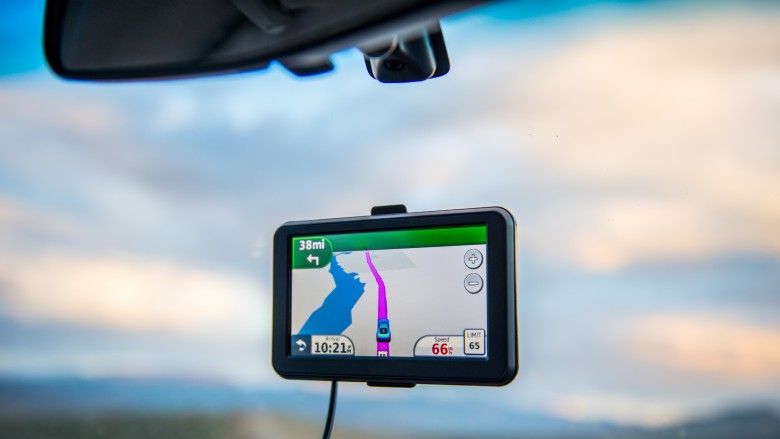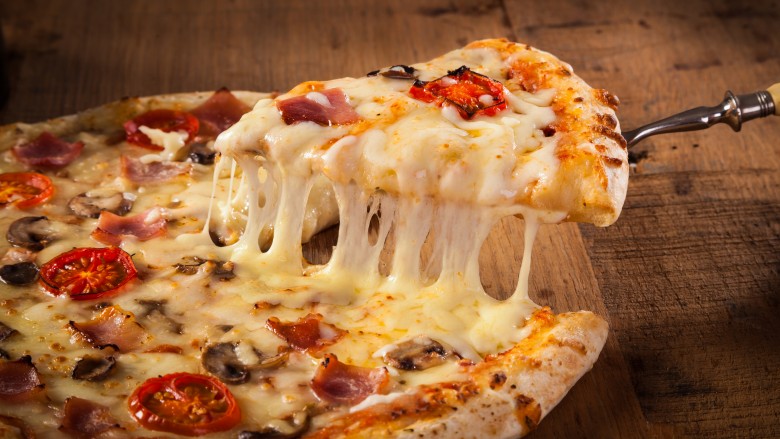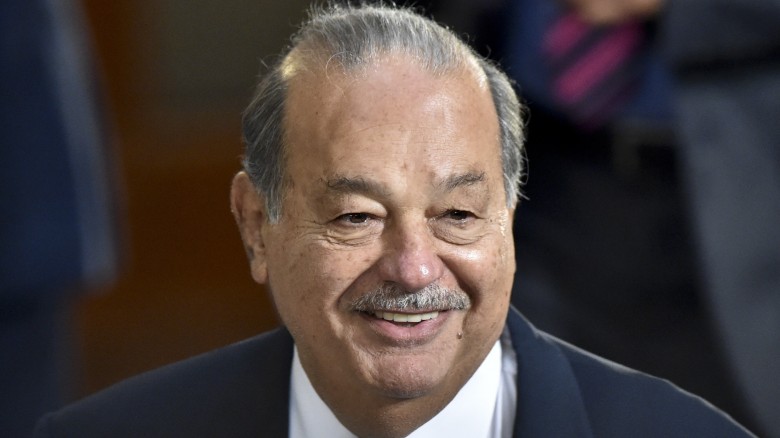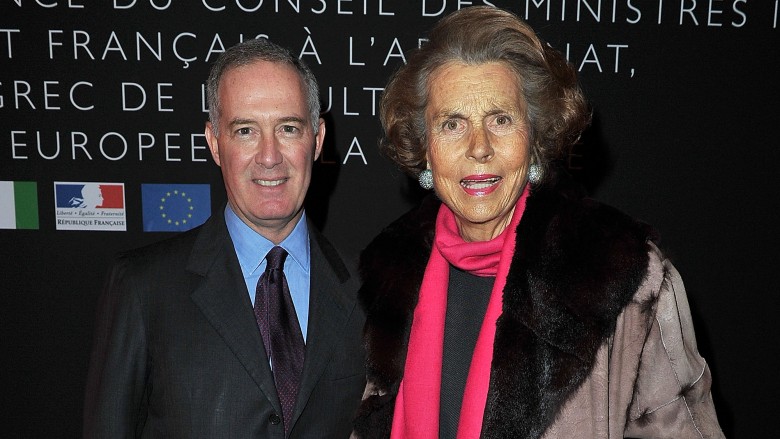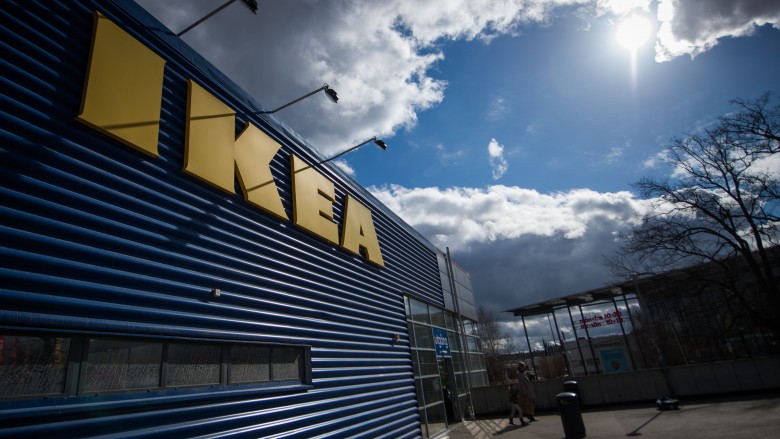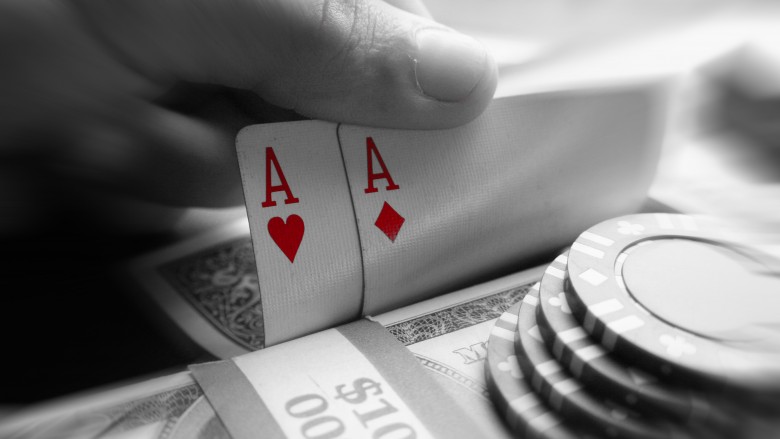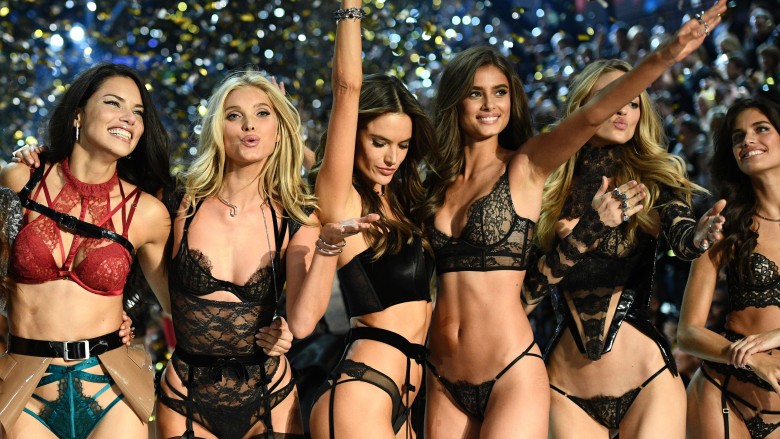Billionaires You\'ve Probably Never Heard Of
Not every filthy rich individual has much taste for the limelight, or any at all. There are plenty of billionaires who, despite their incredible accomplishments and contributions, choose to avoid the press entirely. Each of them have had an incredible climb to the economic top of the world and deserve to have their stories told:
Dr. Min Kao
This is the man you can thank for no longer having to decipher ever-folding road maps, or print out directions from Mapquest. Dr. Min Kao co-founded Garmin Corporation in 1989 alongside Gary Burrell (get it, Gar-Min), in order to "integrate Global Positioning System (GPS) technology into navigation devices for multiple markets." He figured out the design and engineering of the software that gets you around town, and keeps the directionally challenged from making that fourth right turn.
Min Kao studied at the National Taiwan University in Taiwan before earning his doctorate in electrical engineering from the University of Tennessee. When he got tired of researching for NASA and the US Army, he teamed up with Burrell to instead provide the army with GPS capability.
It didn't take long for Garmin to start turning a profit — in 1995, the company sold $105 million worth of devices, netting them $23 million. By 1999 sales reached $233 million, raising profits to $64 million. The company had hit a sweet spot, with military and outdoor recreational markets alike eating up the new GPS. Their success only continues to grow, branching out to new markets such as fitness wearables.
Working as Executive Chairman and co-CEO of the company for many years until his recent retirement, Min has made quite the pretty penny for himself. As of 2017, his net worth is estimated at 2.9 billion. There's a reason you haven't heard of this billionaire though, he is hyper-humble. Garmin vice-president Jon Cassat refers to him as "a genuinely modest man. He celebrates collective achievement ... There's a culture at Garmin of servant leadership." He declines most all interviews, and deflects all praise to the hard work of the people around him. He also dabbles in philanthropy, frequently donating money to his old school, to help attract young would be engineers to the field. "Modest" and "generous" are always welcome terms to hear when describing the world's wealthiest, and Dr. Min Kao exemplifies both.
James Leprino
There are a number of ways to earn your billions: you could work the stocks, invent something crucial to our advancement, or pick a billionaire to be your mommy or daddy. The simplest way, however, is to fill a need, and that's exactly what James Leprino did — he filled the world's need for cheese. His Leprino Foods company is the largest mozzarella producer in the world, which lead to just so much cheddar.
James inherited the family cheese business in the '50s, leading Leprino Foods from the small market, dealing in groceries and handmade cheese, to the dominant force it is today. James' father Mike, an Italian immigrant and founder of the company, achieved local success with his cheeses, and managed to see the potential growth of popularity for pizza coming, so he prepared his company for expansion.
As pizza and mozzarella sales skyrocketed in the '60s, the Leprinos traveled to the holy land of cheese: Wisconsin. There, they learned how to produce mozzarella in 20-pound blocks. This proved to be invaluable as "from 1970 to 1993 ... mozzarella production increased from 245 million pounds to two billion." That's a lot of fried sticks.
James Leprino took over as CEO once his father passed away, and helped branch them out internationally. Today, Leprino Foods provides cheese to chains around the world, like Domino's, Papa John's and Pizza Hut, along with packaged food companies like Hot Pockets and Stouffer's boxed lasagna. Being the cheese guy amounts to a net worth of about $3 billion in 2017. Seems cheese is a great way to bring home the bread.
David Murdock
Some people just have a natural affinity for making big bucks. David Murdock, for example, was drafted into the US Army during World War II, and returned stateside to find himself homeless and hopeless. It was only when a good-hearted citizen offered hi some assistance, that his luck began to change.
The man helped him scrape together $1,200 in loans, and he bought the closing diner where he once lingered, and flipped it for $700 in profits ten months later. He traveled west and continued to find success as a real estate agent in Phoenix, Arizona. When the real estate game went under, he began acquiring businesses. The newest failing business he took on was the near-bankrupt Hawaiian firm Castle & Cooke, and under their flag, he took the obscure pineapple-and-banana company Dole Foods, and ran with it.
He redesigned their logo, began dealing a much wider array of fruits and shortened the name to simply "Dole." After acquiring additional growers for all their new produce Murdock poured a lot of resources into advertising Dole, helping it reach a global recognition factor of 98 percent by the late 1980s.
Murdock's leadership eventually brought the company to go private in 2003 and "Murdock and his partners acquired 76% of the company's shares as part of a buyout valued at about $2.4 billion." With continued guidance of growth and expansion into other avenues such as the Dole Nutrition Institute and Dole Wellness Center, Spa and Hotel, today Murdock is valued at 2.7 billion. Not bad for a former homeless vet.
Alongside being a master at business-CPR, Murdock is as healthy as his pineapples. A big part of Dole's branding was getting people to be more health conscious, a message Murdock truly believes. He posts his eating regimen on a Huffington Post blog and plans on living to see his 125th birthday. Bad news for anyone waiting on that inheritance.
Carlos Slim
It's hard to believe that someone competing with Bill Gates and Warren Buffet for title of "Richest Person" isn't a household name, but maybe you're just not asking the right household. Carlos Slim is easily the richest man in Mexico — he was even ranked as the richest person in the world from 2010 to 2013. Slim is a legendary investor with an impeccable track record. He is believed to have business interests in nearly every aspect of the Mexican economy, and even beyond.
The "Warren Buffett of Mexico" is best known as chairman and CEO of Teléfonos de México, handling nearly all the landline phone calls in Mexico, as well as América Móvil, which runs 70% of the cellular traffic in the country. As The Economist explains, "Mexicans complain that it is impossible to pass a day without putting pesos into Mr Slim's pockets. His interests span retail, banking, construction and much else (including an 8% stake in the New York Times)." Basically, if you buy anything in that country, Slim thanks you for helping to pay his bills.
Carlos Slim is all about the business, but not so much about the businesses. He didn't pick up stake in the New York Times for his love of the press, but because he sees the potential value he can gain with the paper as an asset. Besides, casting such a wide net when it comes to what he owns allows his wealth to remain pretty secure. If one industry is going under, he has plenty others to balance the dead weight up.
Carlos Slim may not be an innovator like Bill Gates, but with his current estimated net worth of $55.4 billion, it's hard to argue he isn't a genius in his own right.
Liliane Bettencourt
While the billionaire club seems to be stuffed entirely with men, there are indeed women joining their ranks too. Liliane Bettencourt is the only child of Eugene Schueller, the founder of L'Oréal. She inherited the L'Oréal fortune when her father died, owning the majority of its shares.
Losing her mother at the age of five, she became very close to her father, and gained interest in business at an early age. She worked as an apprentice at the company in her teens, and helped expand the business as she grew. After her father's passing, she put in the work to continue the company's expansion, acquiring numerous other cosmetic brands.
The French billionaire, currently age 94, has undergone some rough times. She lost her husband, French politician André Bettencourt, in 2007, and was diagnosed with dementia. Being the richest woman in Europe doesn't make deteriorating mental health any better — in fact, it can become a serious liability. In 2015, for example, the French courts convicted ten people of exploiting her vulnerability to steal as much money from her as they could. One of them was sentenced to three years in prison and ordered to pay back over $170 million.
With much of her wealth still tied to L'Oréal, which her grandson now heads, her financial state is still very muchin the black. Forbes currently estimates her net worth at 39.1 billion — hopefully, it all stays rightfully with the family that earned it.
Ingvar Kamprad
For some, hustling is in their blood. Swedish IKEA founder Ingvar Kamprad began his fortune by selling matches at age five, later upgrading to selling Christmas decorations, fish, and pencils on his bike by age ten. Kamprad suffers from dyslexia, so his father rewarded him for his good grades in school with cash — he would later use this money to found IKEA in 1943. The company initially sold small household items like picture frames, but upped the ante to furniture five years in. The "IK" comes from his initials, and the "EA" from the farm he was born on (as well as the nearest villages, Elmtardy and Agunnaryd respectively.)
In 1956, Kamprad flipped the furniture market on its head by introducing "flatpacking," the technique of letting people buy their furniture in pieces, to assemble on their own. This proved to be a major game changer, which vastly cut costs for IKEA (and drastically increased headaches of people trying to read the instructions). Though over 90, he still serves as a senior adviser, despite his son Mathias' role as chairman. On the idea of stepping away, he had this to say: "Oh, I have so much work to do and no time to die." Morbid, but admirable.
Kamprad isn't just about making money — he's all about saving money. He lives in a modest house, eats at his own store's cafe, and flies economy class when he travels, despite being rich enough to own his own mansion, army of chefs, and private jet with ease. For a man with an estimated net worth of $42.8 billion, you'd think he'd try eating something other than IKEA Swedish meatballs.
Sheldon Adelson
Sometimes the best way to make money, is for other people to lose it. Sheldon Adelson was already a hugely successful businessman, but he became one of the richest of the richest by hitting the gambling scene in Las Vegas.
In 1988, his company bought the Sands Hotel and Casino in Las Vegas. Apparently it wasn't to his liking because he destroyed it three years later, to build one of the first "mega resorts" in Las Vegas on top of its ashes: the Venetia. His plan was to elevate the usual casino experience in Vegas, to make it a place gamblers and non-gamblers alike could enjoy, with food, shopping, entertainment, and of course, cards and slots. His $1.5 billion investment paid off big — the Venetia was an instant hit.
Adelson continued to expand his casino empire overseas, soaring his wealth to an estimated $31 billion in 2017. His business has experienced some threats from online gambling, but Adelson is taking the fight to them, and seeing some surprising success even. He's stated that he's "...willing to spend whatever it takes," to stop online gambling in the US. Thanks to having pockets as deep as Adelson's, online gambling may well be in deep trouble.
Leslie Wexner
"You have to understand that no one has to buy anything. Everybody has enough clothing in their closets to last them 100 years. So the issue is to create a demand to stimulate people to buy." Wise words from the man behind the success of Victoria's Secret, Pink, Bath & Body Works, and other super-successful clothing stimulants.
A pioneer of specialty clothing, Leslie Wexner followed in his father's footsteps in opening a retail clothing store he titled "The Limited," as it only stocked women's sportswear. The Limited was a quick success, leading him to open even more stores, and eventually expanding past its origins in Columbus, Ohio. He also set his sights on expanding into other markets, acquiring the San Francisco lingerie company Victoria's Secret in 1982. He gave the store its tradmark style and sex appeal, with Victorian furnishings and sensual displays. He did this because he knows that, to make money in clothing, you can't just sell clothing, but also "style and self-image." In short, you're buying Victoria's Secret because it's Victoria's Secret, not because you need a $50 bra.
As of 2017, Wexner has an estimated net worth of $6 billion, and according to Forbes, his companies dominate 41% of American lingerie sales. Whatever company's in second place? They own 1% of sales. Wexner may not be the sex symbol you expected from the leader in seductive lingerie, but he's done more for it than Adriana Lima could do with several lifetimes of cat walks.
David Sun and John Tu
Many billionaires go from rags to richest, but how many have done that twice? John Tu and David Sun have — they created their first business out of their garage in 1982. Camintonn Corporation sold memory modules for computers and was a booming success, netting $9 million in sales over a few years. Unfortunately their success came to a booming end on October 19, 1987 — also known as Black Monday, when the stock market crashed. The dynamic duo not only lost everything they had, but Tu describes it as losing "a million dollars more." That's beacuse their stockbroker friend had been experimenting with all the money they had in the futures market, a risk that truly blew up in their faces.
However, you don't become a billionaire by giving up. The duo sold what remained of the company and headed back to the garage to start a second one — Kingston Technology. Kingston soon became the undisputed USB-and-flash-drive king of the world but, after 9 years of unparalleled success, Tu and Sun decided it was time to take a business break. They sold 80% stake in Kingston to a Japanese tech company called Softbank, for $1.5 billion. After three years, however, they decided they'd had enough vacation, and managed to buy back their shares for a mere $450 million )due to the market conditions at the time). A billion dollar profit simply by quitting? Yep, these guys know money.
Perhaps wanting to stick to their humble garage origins despite their immense success, Tu and Sun "work in cubicles located in the heart of the company's sales department." Both these billionaires also have an immense generous streak, donating to many charitable causes, as well as to their own employees. After initially selling to Softbank, they took $100 million of the earnings and gave it out as bonuses to Kingston's 500 employees — according to Inside Philanthropy, "some of the bonuses [were] reportedly more than twice many employee's annual salary."
These generous bosses' net worth, as of 2017, is around $5.5 billion each, and they'll very likely continue to maintain that wealth with every new phone we buy.

